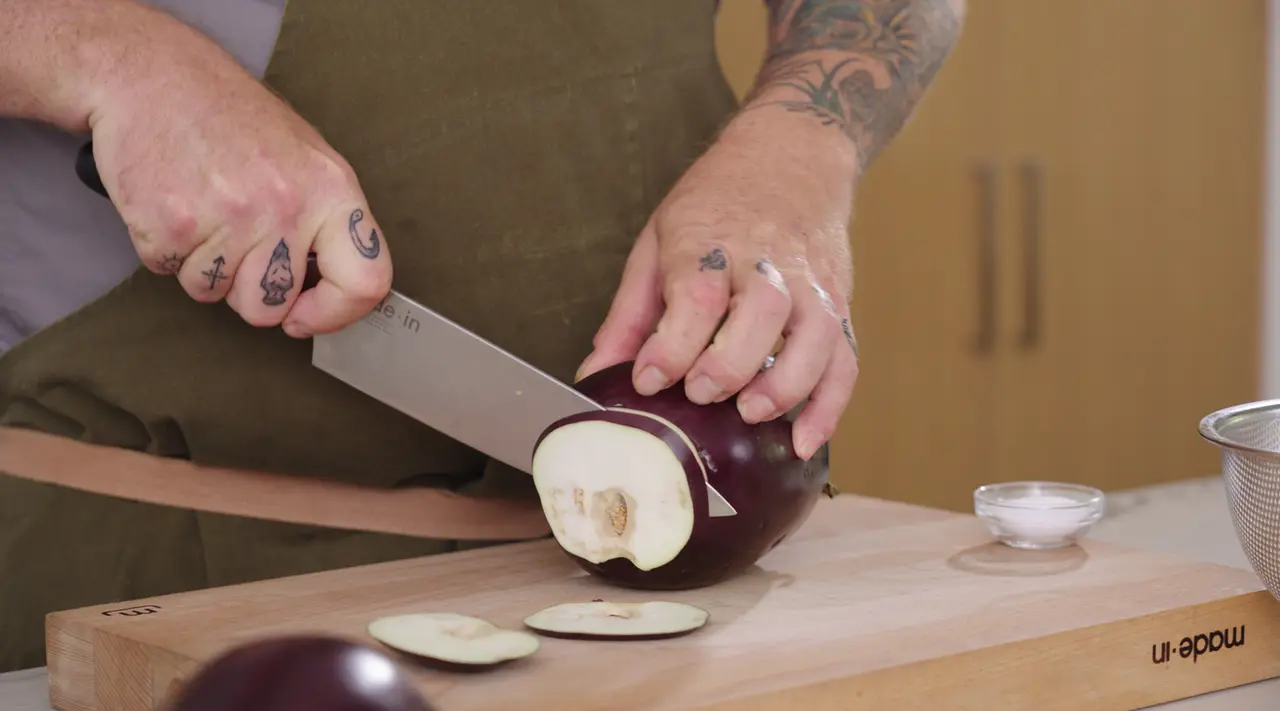Though often referred to a vegetable, eggplants, like tomatoes, are actually a fruit. Also like tomatoes, they’re a member of the nightshade family, which also includes okra, sweet and hot peppers, and potatoes. Similarly, eggplants have edible seeds and skin, but they’re best known for their spongy flesh that absorbs the surrounding flavors however you decide to cook them.
Eggplants come in a surprising number of shapes, sizes, and colors. Many people only know the classic, dark purple oblong of emoji fame, but there are many varieties with applications across all different cuisines. Here, we explain 13 different types of eggplant, along with some suggestions on how to prepare them so their unique flavors and textures shine through.
1. Globe EggplantAlso called “American eggplant” this is the classic oblong shaped variety with deep purple skin. They’re readily available in most supermarkets and have a meaty texture that soaks up flavor. Globe eggplants can be used in most Western eggplant dishes.
2. Italian EggplantSlightly smaller than globes, the flesh of Italian eggplants is also sweeter and more tender. They’re well suited to Italian dishes like caponata, and would also do well in a baked pasta.
3. Japanese EggplantNarrow and dark purple, Japanese eggplants have thin skin and few seeds. They’re often steamed or marinated. Because of their mild taste, they do not have to be salted before cooking.
4. Chinese EggplantVery similar to Japanese eggplant, the Chinese variety is a lighter purple and sometimes longer. They’re a common addition to stir-fry or braised over-rice dishes. Like Japanese eggplant, they do not require salting.
5. Indian EggplantIndian eggplants are sometimes called “baby eggplants” because they look like a mini version of a globe or Italian variety. Small, reddish purple and round, these eggplants are perfect for absorbing the flavor of Indian curry.
6. Thai EggplantThe smallest of these eggplants, the Thai variety is round and green with white stripes, resembling another nightshade—tomatoes. They’re a key ingredient in Thai green curry, and can be found at Asian markets.
7. Sicilian/Zebra/Graffiti EggplantSadly the most unique part about graffiti eggplants—their stripey skin—disappears when cooked, but they’re delicious nonetheless. They can be used in any recipe that calls for globe or Italian and are great prepared whole.
8. Fairy Tale EggplantUsually palm-sized or smaller, this heirloom eggplant variety has tender flesh and can be prepared like a mini version of its larger counterparts. Because of their size, they usually don’t require salting.
9. Rosa Bianca EggplantAnother small, heirloom variety, Rosa Bianca eggplants are a Sicilian variety that has exceptionally delicate skin and tender flesh. They’re good for stuffing or grilling, and because of their natural sweetness, they don’t require salting.
10. Barbarella EggplantAlso called Violetta di Sicilia, Barbarella eggplants are a stunning dark purple with creamy white flesh. They’re mid-sized and resemble heirloom tomatoes in shape. Their sweet, slightly nutty flavor lends itself well to sautéeing.
11. White EggplantAllegedly, this heirloom variety is what gave eggplants their name, as they look like eggs. They’re less hearty than its purple-skinned counterparts, but are interchangeable with globe or Italian eggplants.
12. Little Green EggplantThese eggplants most resemble the Indian variety but are even plumper. Their extra creamy flesh has a very mild flavor, so if you can get your hands on these, they may be good for reluctant eggplant eaters.
13. Turkish Orange EggplantPerhaps the most unique-looking eggplant, Turkish eggplant, also called “Ethiopian eggplant” could easily be mistaken for a persimmon. They originated in Africa and can be quite bitter, but are nice when roasted and served in a salad.
Ready to Cook?
Now that you know all about the different varieties of eggplant, try this take on the classic French dish ratatouille. Courtesy of Chef Dennis Hong of Sereneco in Brooklyn, this recipe features lightly fried vegetables topped with a rich marinara sauce. While ratatouille is often baked, Chef Hong opts to cook his entirety on the stovetop using the Saute Pan for frying the vegetables thanks to its high sides and excellent heat conduction. Enjoy this hearty dish with a light salad for a perfect cold-weather meal.























